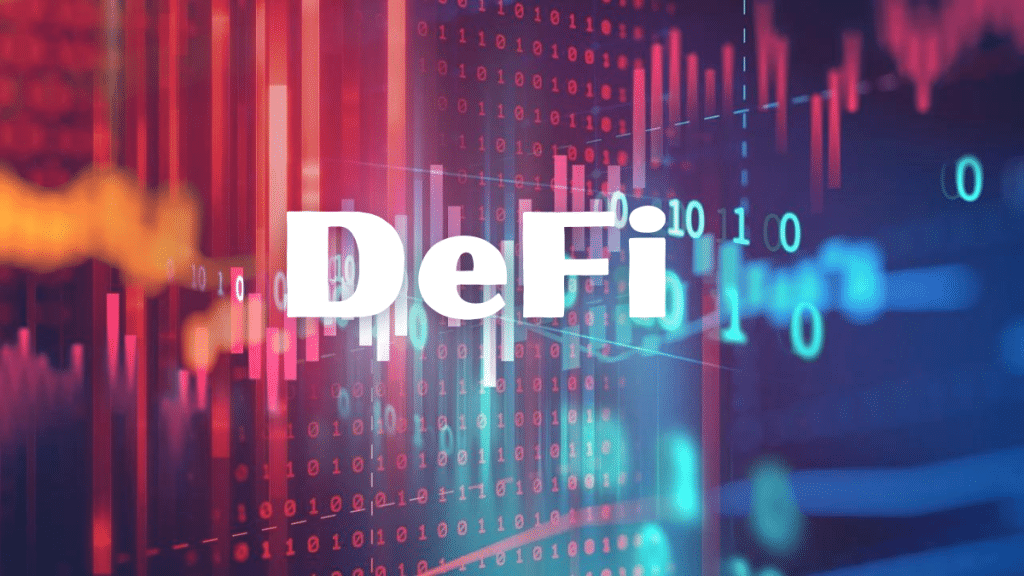In the rapidly evolving landscape of Decentralized Finance (DeFi), reliable data is the backbone of informed decision-making. This document explores the pivotal role of DIA (Decentralized Information Asset) in DeFi, shedding light on its advantages, use cases, and the promising potential it holds for a transparent and secure financial ecosystem. Despite the ever-evolving crypto landscape, stablecoins continue to offer various benefits, including price stability, quick transactions, and a reliable store of value for digital assets.
What is DIA (Decentralized Information Asset)?
In the realm of Decentralized Finance (DeFi), the significance of reliable and transparent data cannot be overstated. DeFi platforms heavily rely on accurate and up-to-date information for decision-making, smart contract executions, and pricing mechanisms. This dependency on data has paved the way for innovative solutions, and one such solution is DIA, or Decentralized Information Asset.
DIA is fundamentally a decentralized oracle platform that specializes in providing high-quality, real-time data feeds for DeFi applications. Unlike traditional centralized oracles that introduce a single point of failure and potential manipulation, DIA operates on the principles of decentralization and trustlessness, aligning perfectly with the ethos of DeFi.
DIA’s architecture is designed to ensure data reliability and integrity. It sources data from a wide range of providers and aggregates this information to create a comprehensive and trustworthy data feed. This decentralized approach significantly reduces the risk of data manipulation, ensuring that DeFi platforms and applications have access to reliable information.
What sets DIA apart from conventional data oracles is its open-source nature and community-driven development. The DIA ecosystem is governed by its community, allowing for transparency and collective decision-making. This approach not only enhances the platform’s credibility but also promotes innovation and adaptability in response to the evolving DeFi landscape.
Use Cases of DIA in DeFi
DIA (Decentralized Information Asset) stands out in the world of DeFi not only for its commitment to data integrity but also for its versatility in serving various use cases within the decentralized finance ecosystem. In this chapter, we will explore the pivotal roles that DIA plays in DeFi applications and platforms.
One of the most prominent use cases of DIA is its contribution to price feeds and asset valuation. DeFi platforms rely on accurate and up-to-date pricing data for cryptocurrencies, tokens, and other digital assets. DIA acts as a reliable source of this critical data, ensuring that DeFi applications can calculate asset values and execute transactions accurately.
Risk management and insurance in DeFi are another area where DIA shines. In the fast-paced and volatile world of cryptocurrencies, managing risk is paramount. DIA provides real-time data that aids DeFi platforms in assessing risk levels associated with various assets, loans, and trading activities. This data-driven approach enhances the platforms’ ability to mitigate risks effectively.
Smart contract execution is the backbone of DeFi, and DIA’s integration with these contracts opens up new possibilities. DIA data feeds can be used within smart contracts to trigger specific actions or decisions automatically based on real-world events and conditions. This integration enhances the efficiency and trustworthiness of DeFi applications, as smart contracts can autonomously respond to changes in the external environment, such as asset prices, market data, or even weather conditions, depending on the use case.
The Advantages of Using DIA
The advantages of integrating DIA (Decentralized Information Asset) into the DeFi ecosystem are clear and impactful, making it a valuable asset for DeFi platforms and applications. In this chapter, we will delve into the tangible benefits that organizations and users gain when choosing DIA as their data oracle solution.
Transparency and security stand out as two fundamental advantages of using DIA. Transparency is inherent in DIA’s decentralized nature and community governance. Data sources, aggregation methods, and data validation processes are open for scrutiny, providing users with a clear understanding of how data is collected and verified. This transparency instills trust among users and reduces the risk of data manipulation or inaccuracies, a common concern in centralized systems.
Decentralization and trustlessness are core principles of DeFi, and DIA embodies these principles perfectly. Unlike centralized oracles, DIA operates without a single point of control or failure. Its network of decentralized nodes ensures that data is retrieved, validated, and delivered without reliance on a centralized entity.
Cost-efficiency and scalability are practical advantages that DIA offers to DeFi platforms. The decentralized nature of DIA reduces the operational costs associated with centralized oracles, which may charge fees for their services. With DIA, DeFi projects can access reliable data feeds without incurring hefty expenses, enabling more cost-effective operations.
Conclusion
DIA has emerged as a beacon of trust and transparency in the DeFi realm. Its advantages in providing reliable data, fostering decentralization, and enhancing cost-efficiency make it a valuable asset for DeFi platforms and users alike. As the DeFi space continues to grow, DIA’s significance in shaping its future cannot be understated.
